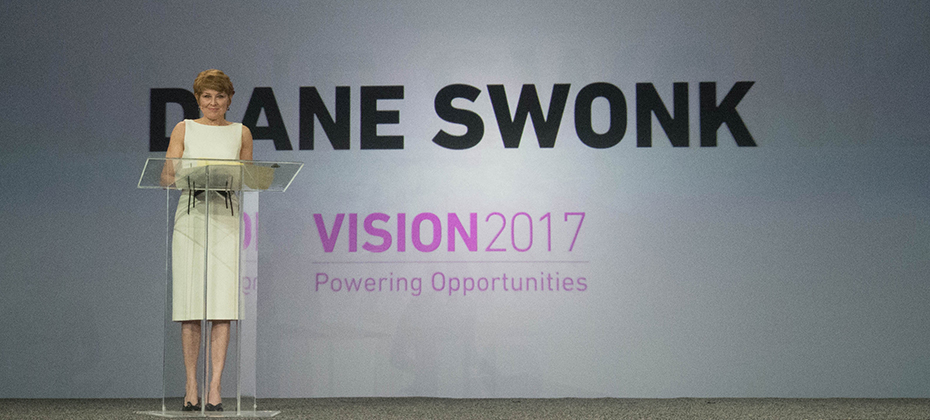Tag: student lending

Student loan debt is weighing down Americans of all generations, but a college education is still prized as the ticket to opportunity. So will the debt continue to climb? Where will students turn for funding? We interviewed Vince Passione, founder and CEO of LendKey, a lending-as-a-service platform specializing in student lending, to gain his perspective on the state of student lending and how the space is evolving for both consumers and lenders. We’ve all seen the headlines about U.S. student loan debt now accounting for $1.4 trillion. The majority of these loans are government-funded, but do you see this shifting? There are many factors at play here. Tuition is rising rapidly and will soon outpace the current level of governmental support available to students searching for loans. Meanwhile, today’s geopolitical climate signals that the current levels of federal funding will also decrease. With these two confounding trends, the need for competitively priced private financing and refinancing options will increase. The student loan industry will shift toward private lenders such as credit unions and banks in order for students to continue to obtain the funds they need for tuition and other college expenses. The key to helping this transition happen is for banks and credit unions to adopt the user-friendly technology platforms that appeal to these prospective student borrowers. Your end-to-end cloud-based technology platform enables lenders to get into the student loan space. How does this work and what must lenders consider as they underwrite and manage a student loan portfolio? Our turnkey platform is unique, in that it lets lenders control underwriting and pricing, unlike the “disruptive” model utilized by many other technology companies in the industry. Most community banks and credit unions lack the in-house resources to develop, implement and maintain an online lending platform. At the same time, millennials and young borrowers continue to prefer the online interface rather than engaging with a brick-and-mortar establishment. We’re committed to partnering with banks and credit unions to allow them to offer private consumer loans, such as student loans, and support them with our technology (loan application and decisioning) and people (customer service agents and loan processors). A strong grasp on the technology and support aspects of online lending platforms alone is merely the foundation for a successful program. As the student lending asset classes are highly regulated, and the regulations are constantly changing, lenders must look to partner with a firm that has a concrete understanding of the regulation, risk and customer service to translate the information to prospective borrowers. I’ve heard you use the phrase “HENRY.” Can you explain what this is and why these individuals are so lucrative for lenders? HENRY stands for “High Earners, Not Rich Yet” and is a term that can be applied to many millennials and young people in today’s economy. This demographic is typically college graduates with well-paying jobs, but have not yet established themselves financially or accrued enough wealth to subsidize larger purchases like cars, homes, renovations and advanced degrees. This is also why they are so lucrative for lenders. HENRYs have just entered their prime borrowing years and are consumers who will easily be able to pay back loans for cars, homes and renovations. But for most of this demographic, their first experience with a financial service product will be a student loan. It is important to get in on the ground floor with these borrowers through student lending to establish a trusted relationship that will result in repeat loans and referrals. You’ve done a great deal of research on millennials and how they are managing student loans. Can you share some of your key learnings? Do you believe Generation Z will behave and manage student debt similarly? It’s no secret that millennials are more apprehensive of student loans than previous generations. As Gen Z begins to enter college, many are plagued with stigmas set forward by the poor experiences millennials experienced with student loans, making them wary of debt. According to a study, 63 percent of the students said they would “possibly” take on student debt, down from 71 percent in 2016. Gen Z is better prepared by seeing the preceding generation grapple with loan issues. Many are making smarter decisions on schools and programs, and are attentive when it comes to monitoring for updates in regulation. As this generation continues to go through the typical collegiate years, the geopolitical climate, as well as rising tuition costs, will increase the need for competitively priced private financing options for Gen Zers. Finally, what trends or predictions do you see occurring in the student lending space over the next five years? The need for student loans continues to exist and shows no sign of slowing down anytime soon, but lenders are only recently opening their eyes to the opportunity that this massive market presents. With the impending drop in federal funding, more FinTech companies will continue to pop up to address this need. This spike in disruption also poses a threat to banks and credit unions, however. With more FinTechs available to help shoulder the burden of student lending, banking and credit union executives must be more judicious when vetting technology partners to ensure they’re working with a partner that meets their regulatory standards, supports their current and prospective clients, and lets them retain the control they wish to keep in-house.

There’s no shortage of headlines alluding to a student loan crisis. But is there a crisis brewing or is this just a headline grab? Let’s look at the data over the past 4 years to find out. Outstanding student loan (should be loan) debt grew 21%, reaching a high of $1.49 trillion in Q4 2016. Over the past 4 years, student loan trades grew 4%, with a slight decline from 2015 to 2016. Average balance per trade grew 17% to reach $8,210. Number of overall student loan trades per consumer is down 5% to just 3.85. The average person with a student loan balance had just over $32,000 outstanding at the end of 2016 — a rise of 15%. While we’re seeing some increases, the data tells us this is a media headline grab. If students are educated about the debt they’re acquiring and are confident they can repay it, student loan debt shouldn’t be a crippling burden. More student loan insights

In just a few short hours, Vision attendees immersed themselves into the depths of the economy, risk models, specialty finance data, credit invisibles, student loan data, online marketplace lending and more. The morning kicked off with one of the most respected and trusted macroeconomists in the U.S., Diane Swonk. With a rap sheet filled with advising central banks and multinational companies, Swonk treated a packed house to a look back on what has transpired in the U.S. economy since the Great Recession, as well as launching into current state and speculating on the months ahead. She described the past decade not as “lost, but rather lagging.” She went onto to say this past year was transitional, and while markets slowed slightly during the months leading up the U.S. presidential election, good things are happening: We’ve finally broken out of the 2% wage rut Recruiting on college campuses has picked up The labor force is growing Debt-to-income levels have returned to where they were prerecession and Investment is coming back. “I believe we’ll see growth over 2% this year,” said Swonk. Still, change is underway. She commented on how the way U.S. consumer spending is changing, and of course we’re seeing a restructuring in the retail space. While JC Penney announces store closings, you simultaneously see Amazon moving from “click to brick,” dabbling in the opening of some actual storefronts. Globally, she said the economy is the strongest it has been in eight years. She closed by noting there is a great deal of political change and unrest in the world today, but says, “Never underestimate our abilities when we tap our human capital.” -- More than 100 attendees filled a room to hear about the current trends and the future of online lending with featured guests from Oliver Wyman, Marlette Funding and Lending USA. While speakers commented on the “hiccup” in the space last year with some layoffs and mergers, volume has continued to double every year for the past several years with roughly $40 billion in cumulative originations today. Panelists discussed the use of alternative data to decision, channel bias, the importance of partnerships and how the market will see fewer and fewer players offering just one product specialty. “It is expensive to acquire customers, so you don’t just want to have one product to sell, but rather a range,” said Sharat Shankar of Lending USA. -- The numbers in the student lending universe are astounding. In a session focused on the U.S. student loan market, new Experian data reveals there is $1.49 billion in total student loan outstandings. In fact, total outstandings have grown 21% over the past four years, while the number of trades have only grown 4%. Costs are skyrocketing. The average balance per trade has grown 17% over the past four years. “We don’t ration education in this country,” said Joe DePaulo of College Ave. Student Loans. “We give everyone access to liquidity when it comes to federal student loans – and it’s not like that in other countries.” While DePaulo notes the access is great, offering many students the opportunity to obtain higher education, he says the problem is with disclosures. Guardians are often the individuals filling out the FAFSA, but the students inherit the loans. Students, he says, rarely understand how much their monthly payment will ultimately be after graduation. For every $10,000 in student loans, he says that will generally equate to a $100 monthly payment. -- Tomorrow, Vision attendees will be treated to more breakout sessions and a concluding keynote with legendary quarterback Tom Brady.

For members of the U.S. military, relocating often, returning home following a lengthy deployment and living with uncertainty isn’t easy. It can take an emotional and financial toll, and many are unprepared for their economic reality after they separate from the military. As we honor those who have served our country this Veterans Day, we are highlighting some of the special financial benefits and safeguards available to help veterans. Housing Help One of the best benefits offered to service members is the Veteran’s Administration (VA) home-loan program. Loan rates are competitive, and the VA guarantees up to 25 percent of the payment on the loan, making it one of the only ways available to buy a home with no down payment and no private mortgage insurance. Debt Relief Having a VA loan qualifies military members for a Military Debt Consolidation Loan (MDCL) that can help with overcoming financial difficulties. The MDCL is similar to a debt consolidation loan: take out one loan to pay off all unsecured debts, such as credit cards, medical bills and payday loans, and make a single payment to one lender. The advantage of a MDCL? Paying a lower interest rate and closing costs than civilians and far less interest than paying the same bills with credit cards. These refinancing loans can be spread out over 10, 15 and sometimes 30 years. Education Benefits The GI Bill is arguably the best benefit for veterans and members of the armed forces. It helps service members pay for higher education for themselves and their dependents, and is one of the top reasons people enlist. Eligible service members receive up to 36 months of education benefits, based on the type of training, length of service, college fund availability and whether he or she contributed to a buy-up program while on active duty. Benefits last up to 10 years, but the time limit may be extended. Saving & Investing Money According to the Department of Defense’s annual Demographics Report, 87 percent of military families contribute to a retirement account. Service members who participated in the Thrift Savings Plan, however, are often unaware of their options after they separate from service, and many don’t realize the advantages of rolling their plans into an IRA or retirement plan of a new employer. Safeguarding Identity Everyone is a potential identity theft target, but military personnel and veterans are particularly vulnerable. Routinely reviewing a credit report is one way to detect a breach. The Attorney General's Office provides general information about what steps to take to recover from identify theft or fraud. Today is a great time to consider ways to support your veteran and active military consumers. They are deserving of our support and recognition not just today but continuously. Learn more about services for veterans and active military to understand the varying protections, and how financial institutions can best support military credit consumers and their families.

$1.3 trillion. 41.1 million Americans. $31,590. These are the growing numbers associated with student loan debt in the United States: $1.3 trillion in outstanding student loans, spread across 41.1 million people, who are leaving college with an average balance of $31,590. The numbers are staggering, and for the first time student loan debt is playing a prominent role in a presidential election. For all of their differences, presidential nominees Hillary Clinton and Donald Trump seem to agree on one thing: student loan debt is a crushing burden. Both candidates have proposed solutions for student lending. Clinton’s “New College Compact” would allow borrowers to refinance their student loans at current rates available to students taking out new loans. She also wants to reduce interest rates on new student loans, and make it easier for borrowers to enroll in income-driven repayment programs that would cap monthly payments at 10 percent of discretionary income. Trump proposes giving more oversight to colleges to decide whether to grant loans to students based on their prospective major. The plan would also give private banks oversight over government-backed student loans—reversing a 2010 decision under President Obama to make the federal government the lender. Neither candidate, however, has outlined a solution for taming growing tuition costs. Tuition expenses are up 1,225 percent over the past 36 years, outpacing medical costs (634 percent rise) and the consumer price index (279 percent) over the same period, according to the Bureau of Labor Statistics. So it’s not surprising an Experian study shows the student loan rate has grown five percent in the past three years. What is surprising is the number of people and the average age of those people holding student loans. Experian found: 20 percent of people with a credit file hold a student loan that is being repaid or deferred. The average age of a consumer with a student loan is 37, with an average income of $47,200 compared to 53.8 and an average income is $44,500 for consumers without a student loan. The average age of a consumer with at least one deferred student loan is 32.7 with an average income of $32,900 compared to 38.7 and an average income of $53,200 for consumers with at least one non-deferred student loan. Candidate proposals aside, one thing is certain: student loan debt has a very real impact on the daily lives of people, many of whom have delayed buying homes, starting families, and saving for retirement. Until policymakers find a way to address bloated tuitions and student debt, it will take many longer to realize their dreams.

The numbers are staggering: more than $1.2 trillion in outstanding student loan debt, 40 million borrowers, and an average balance of $29,000. In fact, a recent Experian study revealed consumer debt is decreasing in every major consumer lending category with the exception of student loans. Student loans have increased by 84 percent since the recession (from 2008 to 2014) and surpassed home equity loans, home-equity lines of credit (HELOC), credit card debt and automotive debt. While the student loan issue has been looming for years, the magnitude is now taking center stage with each 2016 presidential candidate weighing in on solutions. In an effort to provide deeper insights into the student debt universe, Experian’s Kelley Motley and Holly Deason will share a new analysis at Vision 2016 in a session titled, Get educated – a study in the student lending marketplace. They will be joined by Gordon Cameron, executive vice president of PNC. Among the findings they will share include a snapshot of consumers with student loans from three time periods – Pre-recession (December 2007), Recession (December 2009) and Post-Recession/Current (December 2015). At each of these time periods, they will reveal trends around outstanding debt, delinquencies, originations, and also a compare how consumers with student loans rank when it comes to Vantage Score distribution. Finally, their data will explore opportunities for consolidation, showing segments that might be best suited for receiving offers from financial institutions based on Vantage Score, debt and total number of trades. Click here to learn more about Vision 2016 and the session on student loans.